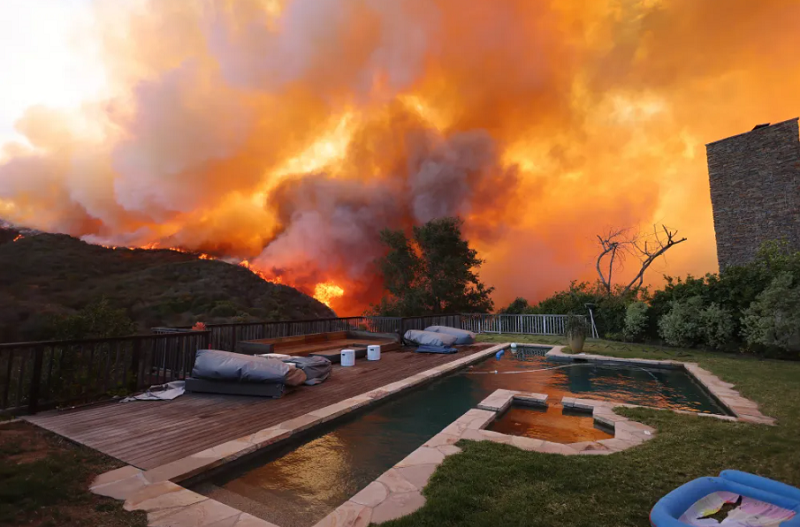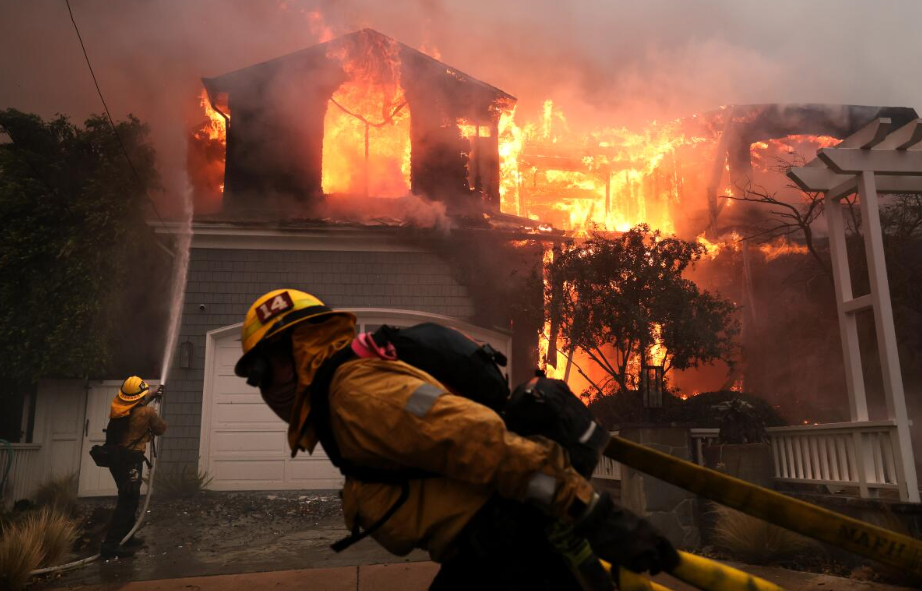Palisades Fire is one of the many wildfires that have occurred in California in recent memory and thus raises concern on the growing incidence of wildfires in the area. This fire is situated in the Pacific Palisades region in Los Angeles County The subject force has underlined key questions on climate change, preparedness, and community resilience of, Fire management in the urban-wildland interfaces.
Background
Pacific Palisades, a neighborhood located in the western part of Los Angeles, boasts views of the ocean, large beautiful houses and the minimum number of high-rises; in close proximity to it, Palisades Fire one can find harsh scenery of rocks and cliffs. The vegetation is also scarce, the slopes are steep and the climate is hot, which makes this area eminently inflammable. But the Palisades Fire is a rather painful example that such risks are inherent when living in the country so prone to wildfires.
Timeline of the Palisades Fire
Palisades Fire started on this date, [insert date] burning out rapidly because of the dryness of the surrounding brush and winds. Firefighters and other trained responders moved quickly into action and the available ground units, helicopters and fixed wing aircrafts were used. Still, the fire quickly spread through more acres of vegetation, people had to evacuate, and homes at risk stood in front of flame.
During the blaze, the fire management authorities ordered people living in vulnerable areas to evacuate their homes. Homes became Centers to which people moved to for safety, while Shelters were also provided for the evacuees and Public Alerts issued to depict the overall progress of the fire. Thus local authorities responded to the crisis effectively with cooperation with the state’s and federal organizations.
Causes and Contributing Factors
Some of the findings of the preliminary inquiries included beliefs that Palisades Fire outcome of [insert cause, e.g., human activity, lightning, etc.]. The region’s vegetation is scarce, and for many years, the residents have been experiencing drought conditions, making the landscape a perfect candidate for the fire. Further, Santa Ana winds of great force aided in the advancement of the flames, and hinder efforts to control the fire.
Also Read:- Exploring Fintechzoom Nvda Stock: A Comprehensive Analysis via FintechZoom!
Labor points to climate change as one of the major contributors to the rising instances of wildfires noted in California. High temperatures, long dry spells and less snow have favoured occurrence of fires. The Palisades Fire shows that climate-change adaptation and risk reduction are the pressing issues that the world needs to address slowly to minimize possible wildfires.
Impact on the Community
That fire was known as the Palisades Fire and it presented a shuttle impact to the community. Residents are reported to have lost property, their homes and valuable property as many houses were burnt down or parts destroyed in the incident. The fire also affected normal operations, with shut down of schools and businesses besides deterioration of air quality mostly because of the smoke and ash.
Wildfires such a Palisades Fire also have effects to health and wellbeing of the people. The worst part of hurricane evacuation, losing their homes and property, and having the future stripped of a clear outlook for them to plan for, are all things that evoke stress and anxiety among the affected residents. They require community support networks, and other mental health services in order to assist as many as possible of the affected individuals and families.
Environmental Consequences
Palisades Fire has caused environmental damages. Wild fire activities involving fires kill vegetation, destabilize ecosystems, and transform fertile covers into anti soil erosion factors. They also emit immense volumes of carbon dioxide and other green house gases contributing to climate change.
After such a fire there will also be a need to reconstruct the affected regions, as it was pointed out. Some of the ways in which the effects of wildfires to the environment can be reduced include; reforestation, the control of erosion and the rehabilitation of habitat.
Firefighting and Emergency Response
The Palisades Fire and the participation of local, state, and federal agencies are also discussed. These difficulties were as follows: hard accessibility, steep topographical features, and climatic instability. Still these reasons prevented their efforts as the main factor of preventing the further fire spreading and extinguishing.
With emergence of technology the modern firefighting has received a big boost. Palisades Fire Drone aerial imagery and satellite imagery, as well as decision support system modeling, assist a firefighter in assessing fires and developing fire behavior and operational strategies. Most of these technologies were probably used in the Palisades Fire and the demonstration on the relevance of embracing innovation in disaster control.
Also Read:- Fintechzoom Best Travel Credit Card: Best Travel Credit Cards of 2025!
Lessons Learned and Future Preparedness
Such fires, are therefore important in making populations be more proactive in preventing losses through wildfires. Some key lessons and recommendations include:
- Improved Vegetation Management: SF: Elimination of accumulated flammable materials such as dry bush and shrubs can go a long way to managing the outbreak of wild fires. Owners of homes as well as the community needs to undertake vegetation management programs together.
- Enhanced Building Codes: People can make their homes and buildings safer during wildfires through products and the manner in which structures are constructed. The imposition of higher construction standards especially for structures located in regions vulnerable to fire are necessary.
- Community Education and Preparedness: Through information sharing and community education, residents can learn how to prepare themselves for a wildfire, how to develop fire evacuation plans and how to assemble disaster kits.
- Investment in Firefighting Resources: Several factors including funding both for firefighters, equipment, and training are however paramount for successful wildfire management.
- Climate Action: This paper also found that it is crucial to eradicate the causes of climate change in order to slow down the occurrence and impact of wildfires. This includes changing from the use of fossil based energy resources, emission of green house gases, and encouraging sustainable utilization of land resources.
Conclusion
The Palisades Fire is a particularly moving story of the difficulties encompassing wildfires in California and other regions. It was indeed important to stress on precaution, mitigation and adaptation measures necessary when communities are faced with realities of climate change. Each time an event such as the Palisades Fire occurs, new knowledge is gained as to how one can prevent serious fires from taking place and how people can better prepare themselves for such disasters.












